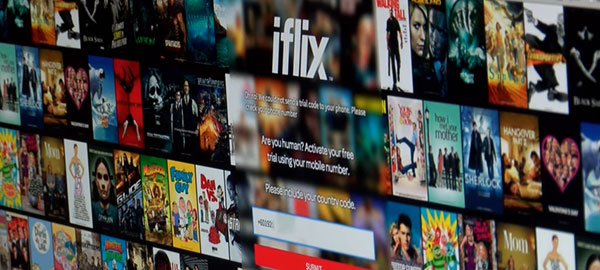The development of Internet and digital technologies have pushed media, television and entertainment to undergo a radical change. With the coming of video streaming services to Malaysia and Southeast Asia, television in the region is now challenged by a new model that aims at a large part of the audience through its new behaviors.
Following the model of the American video streaming service Netflix (who recently launched its services in several ASEAN countries), Iflix is a startup that delivers video streaming services in Malaysia and the region. Iflix’s CEO, Azran Osman-Rani, presents his company and this new model that will bring changes to media and entertainment across Southeast Asia.
The video streaming business model
Video streaming allows people to watch video on demand, not only from home on their television set, but also through their smartphones, tablets and connected devices. For a monthly subscription customers can view as much content as they want (movies, series or shows) whenever and wherever they want it, if they are connected to Internet.
Originally created by Netflix, this disruptive business model challenges the services provided by television channels as people don’t need to watch contents on their TV, at certain scheduled times defined by the channels and can therefore avoid advertising breaks. Thanks to video streaming people can for example watch a full week end of their favorite series, one episode after the other.
Not only does the video streaming model challenge the TV channel model, but since the subscription price is very low, video streaming services offers are often bought in a complementary service aside traditional TV. In the US for example, 85% of video streaming services customers also retain traditional TV.
Iflix pioneering video streaming in Malaysia and Southeast Asia
An entertainment startup
Iflix’s initial fundraising enabled it to developed a sophisticated content distribution platform before the launch, and will then primarily be used to acquire content rights so as to enhance the content portfolio available to its customers. Since its inception, Iflix has seen a great engagement from customers.
To Azran Osman-Rani, who previsously was CEO of AirAsia X, Iflix somehow comes in continuation to his previous responsibilities as video streaming is another disruptive business in Southeast Asia. Building a new brand, company and team, and scaling fast across various markets recalls his experience in AirAsia.
Challenges of video streaming in Southeast Asia
Piracy
One of the main challenges of Iflix is that it comes to compete against illegal services that people use because they are free. Since Iflix’s price is so low, Azran Osman-Rani is confident that the accessibility and convenience provided will however allow it to succeed as price becomes irrelevant compared to the traditional buying of DVDs.
Competitors
Its low price also allows Iflix to compete against international giants like iTunes, as for the price of one content on iTunes iFlix provides access to thousands of contents.
To compete against Netflix, Iflix will provide access to more local contents in local languages, and to compete against specific local players, such as Tonton (specializing in drama), Iflix will have a larger portfolio of international contents.
Iflix also has an engagement and recommendation engine that helps people find more interesting contents to watch from the analysis of previous contents watched, therefore providing an enhanced offer compared to companies with smaller portfolios.
Infrastructure
Another major challenge is that in certain region of Malaysia, particularly on mobile devices (3G), infrastructure does not have enough bandwidth to support video streaming. Even though he expects to benefit from infrastructural enhancements in the coming months and years, Iflix is also developing technologies to cope with low bandwidth, such as “download in advance”, enabling people to download contents before watching them.
Videos from June 2015 by The Edge TV and Bloomberg TV Malaysia.

![Entertainment and media outlook in Malaysia [report] Malaysia entertainment and media outlook](https://aseanup.com/wp-content/uploads/2016/03/Malaysia-entertainment-media-150x68.jpg)


![Southeast Asia digital economy 2025 [report] Southeast Asia digital economy 2025](https://aseanup.com/wp-content/uploads/2016/06/Southeast-Asia-digital-economy-2025-150x68.jpg)




